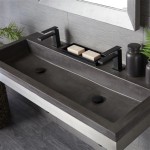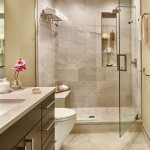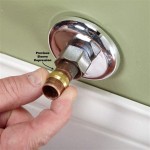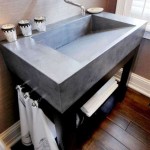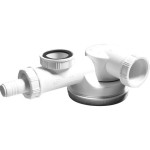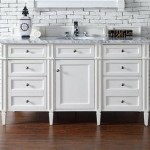Custom Bathroom Sink Cabinets: A Comprehensive Guide
The bathroom, often a space for personal hygiene and relaxation, demands careful consideration in its design. One of the most crucial elements within a bathroom is the sink and its accompanying cabinet. While pre-fabricated options abound, custom bathroom sink cabinets offer a tailored approach to functionality, aesthetics, and spatial optimization. This article explores the advantages, considerations, materials, and design principles involved in selecting and implementing custom bathroom sink cabinets.
Customization allows for a bathroom cabinet that perfectly complements the existing décor and maximizes usable space, leading to a more cohesive and efficient bathroom environment. Unlike standardized cabinets, custom designs can address specific needs and preferences, resulting in a bathroom that is both practical and visually appealing.
Key Point 1: The Advantages of Customization
Choosing a custom bathroom sink cabinet provides numerous advantages that extend beyond simple aesthetics. These benefits contribute to both the immediate enjoyment of the bathroom and its long-term value.
Space Optimization: Bathrooms come in various sizes and configurations. Standard cabinets often fail to effectively utilize available space, leading to awkward gaps or wasted areas. Custom cabinets, on the other hand, are designed to fit precisely into the designated area, maximizing storage potential, particularly in smaller bathrooms where every inch counts. Corners, alcoves, and other challenging spaces can be seamlessly integrated into the cabinet design, creating a unified and functional unit.
Personalized Design: Customization allows for the selection of specific materials, finishes, hardware, and internal configurations to perfectly match the desired style and needs. Whether the aesthetic is modern, traditional, minimalist, or eclectic, a custom cabinet can be designed to seamlessly integrate with the overall bathroom design theme. The homeowner has complete control over the visual appearance, ensuring a cohesive and harmonious look.
Enhanced Functionality: Pre-fabricated cabinets offer limited options for internal organization. Custom cabinets can be configured to accommodate specific storage needs, such as drawers for toiletries, shelves for towels, and specialized compartments for hair styling tools or cleaning supplies. This personalized organization minimizes clutter and maximizes efficiency, making daily routines smoother and more enjoyable. The height and depth of the cabinet can also be adjusted to suit the user's physical comfort and accessibility requirements.
Increased Property Value: A well-designed and expertly crafted custom bathroom sink cabinet can significantly enhance the perceived value of a home. Potential buyers appreciate the attention to detail and the personalized touches that custom cabinetry provides. This investment can yield a substantial return when selling the property.
Durability and Longevity: Custom cabinets are often constructed using higher-quality materials and superior craftsmanship compared to mass-produced alternatives. This translates to increased durability and a longer lifespan, making them a worthwhile investment over time. The use of solid wood, premium hardware, and durable finishes ensures that the cabinet can withstand the rigors of daily use and maintain its beauty for years to come.
Key Point 2: Materials and Construction Considerations
The choice of materials and the construction methods employed are crucial to the overall quality and longevity of a custom bathroom sink cabinet. Careful consideration should be given to the specific requirements of the bathroom environment, including moisture resistance and durability.
Wood Options: Solid wood remains a popular choice for custom cabinetry, offering a classic aesthetic and exceptional durability. Popular options include: * Hardwoods: Maple, oak, cherry, and walnut are known for their strength, beauty, and resistance to moisture. They are ideal for high-end cabinets that will last for decades. * Softwoods: Pine and poplar are more affordable options, but they require careful sealing and finishing to protect them from moisture damage. * Engineered Wood: Plywood and MDF (Medium-Density Fiberboard) are commonly used in cabinet construction. Plywood offers better moisture resistance than MDF and is a good option for cabinet boxes. MDF is often used for doors and drawer fronts due to its smooth surface and stability.
Moisture Resistance: Bathrooms are inherently humid environments, so moisture resistance is paramount. Wood cabinets should be properly sealed and finished with moisture-resistant coatings. Plywood should be marine grade or exterior grade for optimal protection. Consider using materials such as PVC or solid surface for areas that are particularly susceptible to moisture exposure, such as the cabinet base.
Hardware Selection: Hinges, drawer slides, and knobs or pulls contribute significantly to the functionality and aesthetics of the cabinet. High-quality hardware ensures smooth operation and long-term durability. Soft-close hinges and self-closing drawer slides are desirable features that enhance the user experience. Consider using corrosion-resistant materials, such as stainless steel or brass, for hardware to prevent rust and deterioration.
Construction Methods: The joinery techniques used in cabinet construction impact the overall strength and stability of the unit. Dovetail joints, mortise-and-tenon joints, and other robust joinery methods ensure that the cabinet can withstand the stresses of daily use. Avoid cabinets that are simply glued or stapled together, as these are more likely to fail over time. Look for evidence of careful craftsmanship and attention to detail in the construction process.
Countertop Integration: The countertop material should be carefully considered in relation to the cabinet material and overall design. Popular countertop options include granite, quartz, marble, solid surface, and laminate. The countertop should be properly sealed and installed to prevent water damage to the cabinet below. The weight of the countertop should also be taken into account when designing the cabinet structure.
Key Point 3: Design Principles and Considerations
Designing a custom bathroom sink cabinet involves a thoughtful approach to both aesthetics and functionality. Several design principles should be considered to ensure that the cabinet meets the specific needs and preferences of the user.
Ergonomics and Accessibility: The height and depth of the cabinet should be optimized for comfortable use. The sink should be positioned at a height that minimizes strain on the back and neck. Consider the needs of all users, including children and individuals with mobility limitations. ADA-compliant designs may be necessary to ensure accessibility for individuals with disabilities.
Style and Aesthetics: The cabinet should complement the overall style of the bathroom. Consider the existing color scheme, fixtures, and architectural details. The cabinet style can range from modern and minimalist to traditional and ornate. Choose materials, finishes, and hardware that align with the desired aesthetic. Pay attention to details such as door styles, drawer front designs, and decorative elements.
Storage Needs: Assess the specific storage requirements for the bathroom. Consider the types of items that need to be stored, such as toiletries, towels, cleaning supplies, and personal care products. Design the internal configuration of the cabinet to accommodate these items efficiently. Incorporate features such as adjustable shelves, pull-out drawers, and specialized compartments to maximize storage potential.
Lighting Integration: Consider integrating lighting into the cabinet design. Under-cabinet lighting can provide task lighting for grooming and hygiene activities. In-cabinet lighting can illuminate the contents of the cabinet, making it easier to find items. Choose energy-efficient LED lighting for optimal performance and longevity.
Ventilation and Plumbing: Ensure that the cabinet design allows for proper ventilation to prevent moisture build-up and mold growth. Provide adequate access to plumbing connections for the sink and faucet. Consider the placement of pipes and drains when designing the internal configuration of the cabinet.
Professional Assistance: Engaging a qualified cabinet maker or interior designer can be invaluable in the custom cabinet design process. These professionals can provide expert guidance on material selection, construction methods, and design principles. They can also create detailed drawings and specifications to ensure that the cabinet meets the specific requirements of the project. A professional can also assist with installation, ensuring that the cabinet is properly installed and functioning correctly.
Ultimately, a custom bathroom sink cabinet represents a significant investment in the functionality, aesthetics, and value of a bathroom. By carefully considering the advantages, materials, construction methods, and design principles outlined above, homeowners can create a bathroom space that is both practical and visually appealing.

Custom Bathroom Vanities And Cabinets Simpson Cabinetry

Custom Vanity Bathroom Cabinetry Design Line Kitchens

Custom Floating Walnut Bathroom Vanity Cabinet Hand Made Soft

Custom Vanity Bathroom Cabinetry Design Line Kitchens

Custom Single Sink Vanity Handmade Lifetime Warranty

Best Bathroom Vanity Design Ideas Christopher Scott Cabinetry

Bathroom Vanities For Phoenix Az Homes Copper Canyon

Polaris Home Design Breaks Ground With Custom Bathroom Vanities

Custom Cabinet Series The Bathroom Jkath Design Build Reinvent

Custom Bathroom Vanities Cabinets Any Size Several Secretbath
